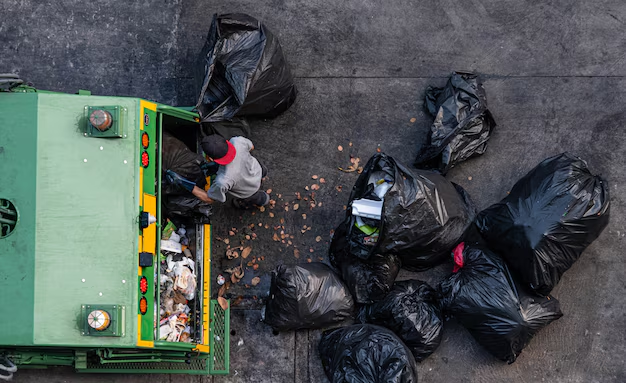The traditional “take-make-dispose” model of production and consumption is increasingly being challenged as the world faces growing environmental concerns, resource scarcity, and waste accumulation. A more sustainable and efficient alternative has emerged in the form of the circular economy. This model seeks to reduce waste and make the most of available resources by “closing the loop” of product life cycles, encouraging the reuse, repair, refurbishment, and recycling of materials. In this article, we’ll explore the concept of the circular economy, its relationship with waste management, and how businesses and individuals can contribute to a more sustainable future.
1. What is the Circular Economy?
The circular economy is a system of production and consumption designed to minimize waste and maximize the utility of resources. Unlike the linear economy, which is based on a “take, make, dispose” model, the circular economy focuses on reusing, repairing, refurbishing, and recycling materials to create a closed-loop system. The goal is to reduce the consumption of finite resources, cut down on environmental impact, and generate economic benefits.
In a circular economy, products and materials are kept in use for as long as possible, and when they reach the end of their life cycle, they are either recycled or repurposed into new products. This creates a regenerative system where waste and pollution are minimized, resources are used efficiently, and the lifecycle of products is extended.
2. How Does the Circular Economy Relate to Waste Management?
Waste management plays a crucial role in the circular economy. Traditional waste management systems focus on disposing of or landfilling waste, which creates environmental pollution and inefficiency. In a circular economy, waste management is focused on reducing, reusing, and recycling materials to keep them in circulation for as long as possible.
Key strategies in waste management within the circular economy include:
- Reduce: Minimizing the creation of waste at the source by designing products with longer lifespans and fewer raw materials.
- Reuse: Reusing products and components whenever possible to extend their lifecycle and reduce the need for new resources.
- Recycle: Converting waste materials back into new products to prevent the depletion of natural resources and reduce the volume of waste in landfills.
- Upcycling: Transforming waste into higher-value products to improve material quality and use.
- Remanufacturing and Repair: Extending the life of products through repair and refurbishment, reducing the need for new materials.
Waste management in the context of the circular economy is not just about reducing the environmental footprint of waste but also about creating a more sustainable and regenerative economic system.
3. Benefits of the Circular Economy and Waste Management
The transition to a circular economy offers numerous benefits for businesses, communities, and the environment:
1. Environmental Benefits
- Reduced Waste: By reusing and recycling materials, the amount of waste sent to landfills and incinerators is drastically reduced.
- Conservation of Resources: The circular economy encourages the use of renewable resources and reduces the demand for virgin raw materials, helping conserve natural resources.
- Lower Carbon Footprint: The reuse and recycling of materials require less energy compared to producing new goods from raw materials, leading to lower carbon emissions.
2. Economic Benefits
- Cost Savings: Businesses can save money by reducing waste, improving resource efficiency, and cutting costs associated with raw material procurement and disposal.
- New Business Opportunities: The circular economy creates new markets and industries, such as repair services, recycling industries, and upcycling businesses.
- Job Creation: The circular economy has the potential to generate a wide range of new jobs in areas such as recycling, product design, remanufacturing, and waste management services.
3. Social Benefits
- Improved Resource Access: By emphasizing sharing, reusing, and recycling, the circular economy can make products more accessible to a larger population, potentially reducing inequality.
- Community Engagement: Circular practices, such as repair workshops or community sharing programs, foster collaboration and engagement in local communities, creating a more sustainable and connected society.
4. Key Strategies for Closing the Loop in Waste Management
To close the loop and embrace the principles of the circular economy, businesses, governments, and individuals must adopt strategies that promote sustainability and waste reduction. Here are a few essential strategies:
1. Design for Longevity and Circularity
- Product designers should focus on creating durable, repairable, and recyclable products. By designing with the end-of-life phase in mind, products can be easier to disassemble, repair, or repurpose, ensuring they remain in use for as long as possible.
Key Actions:
- Use modular designs that allow for easy repair and upgrades.
- Choose materials that can be recycled or reused.
- Minimize the use of toxic substances that complicate recycling.
2. Encourage Product Take-Back and Recycling Programs
- Companies can establish take-back programs that allow customers to return used products for recycling or refurbishment. This ensures that valuable materials are not discarded but instead recycled into new products.
Key Actions:
- Offer incentives for customers to return old products (e.g., discounts on new purchases).
- Partner with recycling companies to ensure proper disposal and material recovery.
3. Embrace Extended Producer Responsibility (EPR)
- EPR is a policy approach that holds manufacturers accountable for the entire lifecycle of their products, including end-of-life disposal. Under EPR programs, companies are responsible for managing the recycling or disposal of their products once they are no longer in use.
Key Actions:
- Implement EPR programs for packaging, electronics, and other goods.
- Work with local governments to ensure that proper waste collection and recycling infrastructure is in place.
4. Adopt Circular Business Models
- Businesses can explore various circular business models, such as product-as-a-service or leasing models, that encourage the return and reuse of products. For example, instead of selling a product outright, a company might lease it and take it back when the customer is done using it, refurbish it, and resell or lease it again.
Key Actions:
- Shift from a “sell and forget” approach to a model where products are returned, refurbished, and reused.
- Offer services such as repair, maintenance, or upgrades instead of promoting single-use consumption.
5. Promote Recycling and Upcycling
- Encouraging customers to recycle products and materials properly and finding innovative ways to upcycle waste can help keep materials in circulation longer. The recycling process should be streamlined and supported by clear guidelines to improve participation rates.
Key Actions:
- Improve waste segregation and recycling facilities to make it easier for consumers to recycle materials.
- Collaborate with artists, designers, and manufacturers to upcycle waste materials into new products.
6. Support Circular Economy Initiatives
- Governments can play a critical role in facilitating the transition to a circular economy by implementing policies, regulations, and incentives that promote sustainability. Public investment in waste management infrastructure and circular initiatives can help accelerate the adoption of circular economy practices.
Key Actions:
- Implement tax incentives or subsidies for businesses adopting circular practices.
- Invest in research and development of new recycling technologies and materials recovery processes.
- Educate the public on waste reduction and circular economy principles.
5. Challenges in Implementing a Circular Economy
While the benefits of a circular economy are clear, there are several challenges that need to be addressed:
1. Lack of Infrastructure
- Effective waste management and recycling require adequate infrastructure, such as collection systems, sorting facilities, and recycling plants. In many parts of the world, this infrastructure is lacking or underdeveloped.
2. Economic and Consumer Behavior Barriers
- The shift to a circular economy requires changing consumer behavior, which can be challenging. People are often accustomed to the convenience of disposable products and may be reluctant to adopt more sustainable practices.
3. Technological Limitations
- The technologies for recycling and upcycling some materials, especially complex or composite materials, are still in development. Advances in material science and recycling technologies are needed to make circularity feasible for a broader range of products.
4. Costs of Transition
- Transitioning from a linear to a circular business model can involve upfront costs, such as investment in new technologies, redesigning products, and setting up take-back systems. For some companies, this transition can be financially challenging.
6. Conclusion: Closing the Loop for a Sustainable Future
The circular economy represents a transformative shift toward sustainability by closing the loop on resource use and waste. By embracing circularity, businesses and individuals can help reduce waste, conserve resources, and create a more sustainable world. However, the successful implementation of this model requires collaboration across industries, innovation in product design and recycling technologies, and supportive policies from governments. By working together, we can transition to a more regenerative economy, benefiting not only the environment but also the economy and society as a whole. Closing the loop is not just an opportunity—it’s a necessity for a sustainable future.

